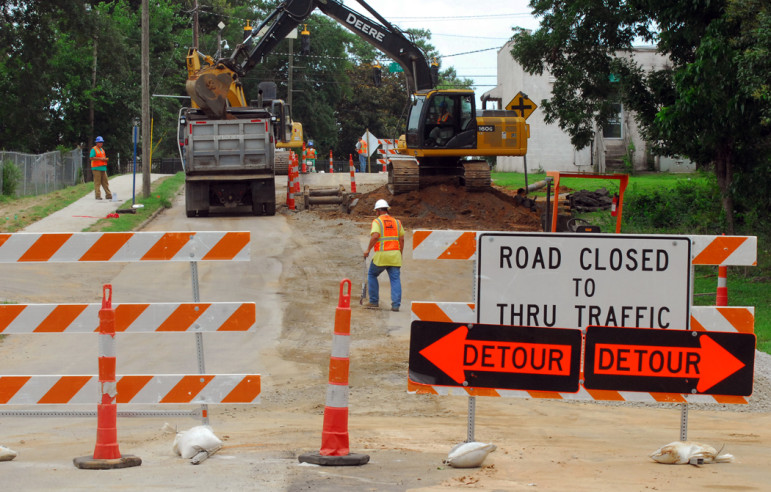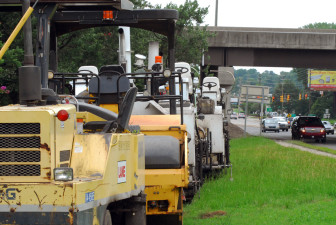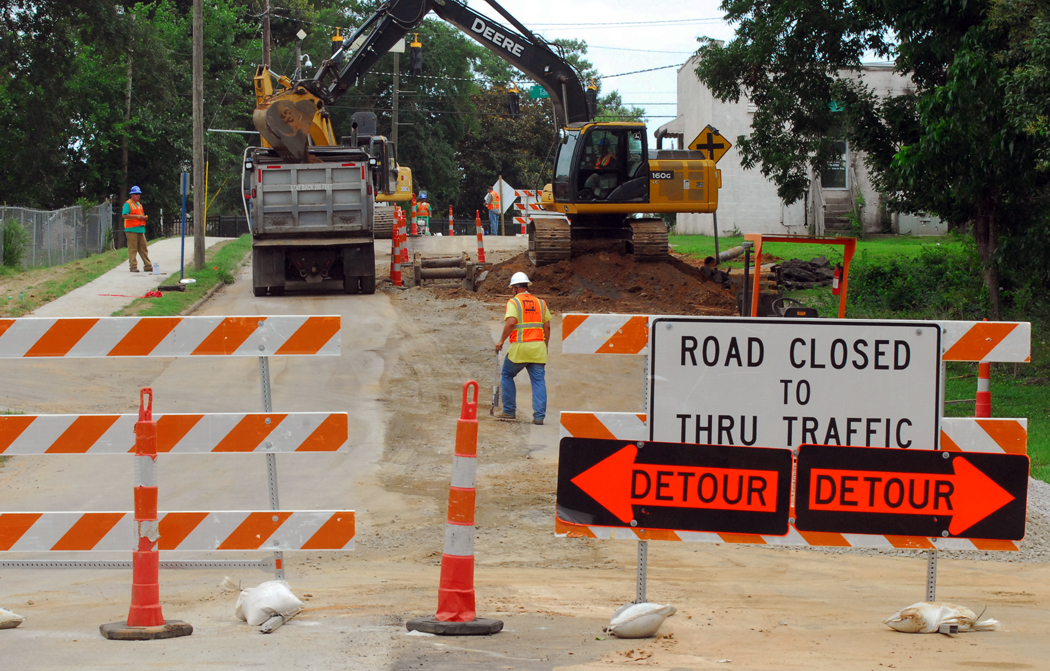At today’s funding levels, it would take the City of Raleigh 50 years to pave every one of its streets.
Without additional funding, the city’s roadways will decline and cost the city more in the future. Ideally, streets should be resurfaced every 12 to 18 years, but historically, city budgets around the country tend to downplay maintenance costs.
Raleigh is no different.
The city is required to maintain 1,055 miles of of streets.

Karen Tam / Raleigh Public Record
Street work on Oakwood Avenue.
At current funding levels, the city can only resurface these streets once every 50 years. Of course, high-trafficked streets and thoroughfares get a fresh coat of asphalt sooner than that, but Public Works Director Carl Dawson said some of Raleigh’s residential culs-de-sac haven’t been touched in 30 years.
Street maintenance is part of the Transportation Field Services budget, which comes in at about $12.3 million. This budget also includes stormwater utility maintenance.
The city spends about $3 million a year on asphalt pavement maintenance, which includes milling, patching and installing wheelchair-accessible ramps. That does not include $5 million this year from 2011 transportation bond money.
In order to get to a 12- to 18-year schedule, the city would have to kick up the spending to about $12 million a year.
Fewer Miles for More Money
The problem with street maintenance is that the longer streets go without getting paved, the more it will cost to resurface them.
“If you don’t take care of the infrastructure that you have,” said Transportation Planning Manager Eric Lamb, “you will spend more money on repairs and mitigation than if you just spent the money on maintenance in the first place.”
Dawson echoed Lamb’s comment by saying that once you pass that 12- to 18-year threshold, the maintenance costs increase exponentially.
“National research has shown that, economically, the optimum pavement cycle is approximately 12 to 18 years,” Dawson wrote in an email. “This research indicates that after 12 to 18 years, the amount of money spent on patching and pavement repairs in advance of resurfacing increases dramatically, so you get fewer miles resurfaced for the same dollars.”
As a result, the city spends more money rehabilitating those same roads just to get them to a point where they can be resurfaced and gets less paving done for the money.
For example, in 2003, the city spent 61 percent of its $2.3 million repaving budget on asphalt and repaving work; the rest paid for work necessary to prepare the road for repaving.
As the roads decline, the asphalt percentage continues to decrease: In 2008, right before the recession, 57 percent of a $5.6 million repaving budget was used for resurfacing. This year, the city used only 47 percent of its $4.3 million allocation for paving.
Dawson said the percentage will likely decrease again next year with the implementation of new Americans with Disabilities Act requirements.
Finding Money
To help out with the backlog, the city set aside $10 million in the 2011 transportation bond for resurfacing.
This year, the city is on track to pave 21 miles of streets using the first $5 million in bond money. The city will use the remaining $5 million next year, but officials expect to get less mileage because of the additional cost for wheelchair-access ramps.
No money has been allocated for resurfacing in the 2013 transportation bond.

Karen Tam / Raleigh Public Record
Paving equipment waits on the side of the road for the next assignment.
As a matter of practice, Lamb said that bond money is intended for larger capital projects. The 2011 transportation bond was atypical in that it included money for resurfacing, sidewalks and greenway projects.
Dawson said that the city wouldn’t jump from its current funding level to $12 million in one year, but that the budget would slowly increase during the next few years.
At a June 24 city council meeting Mayor Nancy McFarlane said that street maintenance will need to be a priority in next year’s budget discussions.
